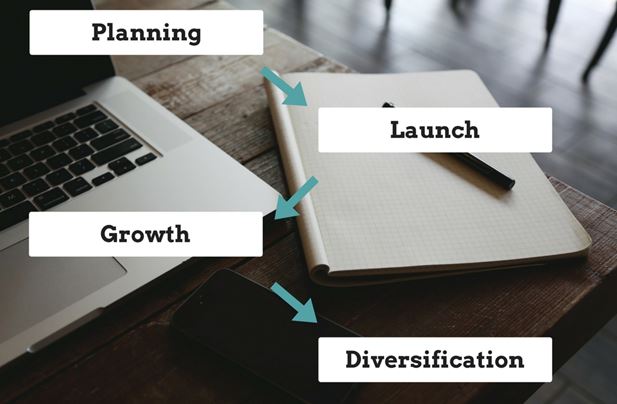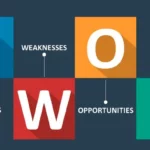Building a business is definitely not an easy job. It needs you to invest not just funds but hard work, passion, dedication, and a lot of time. When you’ve invested so much into your business, it is easy for you to feel impatient if you don’t see the results that you wanted to.
A Brief Introduction to Life Cycle of an eCommerce Company

But to better understand what needs your greater attention, you need to know where your business stands.
While you’re busy making your ecommerce business popular amongst your customers, you tend to miss out on several critical processes that need to be accomplished to get a successful business. Instead of doing a trial and error on growing your business, if you understand where you are on your path, it’ll be easier for you to reach your destination.
Stage 1: Planning
This is your very first step where you plan on how your business will work. You establish a goal for your company and plan on the things that you need to do to accomplish that goal. The biggest part you need to focus on here is how much it is going to cost to launch your company and sell your first products and how long it will take your product to become popular enough to make your business profitable. Most times, this time is a lot longer than what you expect so don’t give up if you don’t see results on time.
Stage 2: Proof Of Concept
While your business is still young, your primary goal should be to understand the value of your product in the market and see whether it is profitable. So before you invest too much time and money into the product, test the market to see if you get profitable sales. You can even try a crowdfunding campaign to see if people like your product.
Even if you find out that your product is not viable for your company, don’t give up on being an entrepreneur. This is still the initial stage of your business and rethinking or modifying your product can still fetch you results.
Stage 3: Launch Phase
Here, you start to mass produce your product and do everything in your power to sell it through all the channels possible. By this time, you have a fair idea of pricing, margins, and revenue goals, but you will still be learning ways to best sell and market your product. However, it is important that you have a marketing plan in place to avoid unnecessary wasting of your funds.
Stage 4: Plateauing Growth
Most startup businesses have a spiked growth right after the launch phase, mostly because of how popular the product is or how well the marketing is done. After some time however, this growth curve tends to straighten out.
This is extremely common and is generally not a reason to panic. Once your business gets awareness and recognition and gains momentum, progress will automatically start to appear. At this point, it is important that you make slight strategic and measured changes in your business that help you sell more. Put in ample time and effort in research before you adopt any changes in your business.

Stage 5: Renewed Growth
Many business owners think that a sudden and swift change in their system can help them make up for the plateauing growth, but that is hardly a solution. And most times, you’re not taking a strategic decision here. Re-platforming is a great solution, but only if your business solution is able to withstand the change.
Smaller e-commerce platforms also don’t give you the flexibility you need so you might have to move onto a bigger platform. But ensure that you do ample research and carefully measure all the risks before moving onto a bigger platform. One such great platform specially designed for Indian market requirements is the Shopify Gold that gives you great customization and an unlimited bandwidth to grow in.
Stage 6: Diversification
At this point, your business is stable even without your presence, allowing you to focus on exploring new fields and expanding your business. Most of the major work is handled by qualified managers and you are free of your day-to-day chores.
In this phase, you can think of new ways to evolve your business model and can even set up a private equity investment that allows you to better fund your growth.
Knowing where you stand can help you manage your expectations and invest more time and resources in the regions required. Don’t worry even if you have crossed one of these stages, because it is never too late to go back and put things in order to let your e-commerce business run successfully. 🙂
Join 25,000+ smart readers—don’t miss out!






